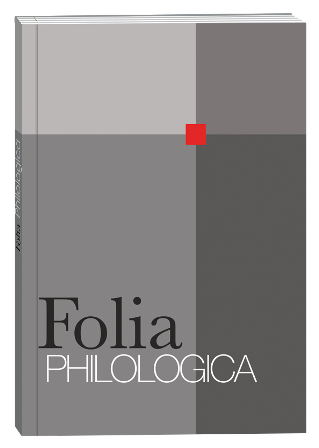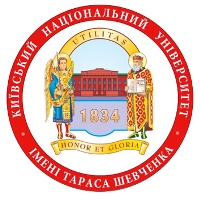TOPONYMICS OF EUROPE ON THE MAP OF THE UKRAINIANS OF THE XVI–XVIII CENTURIES (BASED ON MATERIALS OF WRITTEN MONUMENTS)
DOI:
https://doi.org/10.17721/folia.philologica/2023/5/6Keywords:
written monuments, toponymy, toponymic appellatives, hydronyms, names of seas, European context, linguistic worldviewAbstract
The article delves into the study of toponymy in Europe and how Ukrainians, during the 16th and 18th centuries, assigned geographical features with names of their world conception reflected in the linguistic worldview. Ukrainian written monuments provide valuable insight into various aspects of the lives of our ancestors, including their material and spiritual culture and the linguistic heritage of Ukrainian language speakers from that period. Additionally, they offer an in-depth look into the linguistic portrait and worldview of Ukrainians, their perceptions of themselves, their surroundings, distant and nearby world, foreign lands, customs, and rituals. Words that preserve centuries-old linguistic experiences are fundamental elements of systemic means that serve as substrates, particularly in cementing linguistic formations, such as phrases. This study aims to investigate toponyms and toponymic appellatives, focusing on hydronyms, specifically the names of seas. The findings reveal that the toponymic appellatives МОРЕ – SEA and ОКЕАН – OCEAN, in contrast to their present-day counterparts, were considered synonymous and, in the Ukrainian imagination, referred to a vast body of water. The analysis of toponyms and hydronyms, especially the names of seas on the European continent, demonstrates that Ukrainians used two to four names to designate a single hydro object, suggesting that they have not yet established the geographic nomenclature system on the European map. The study affirms the assertion of many language historians that geographical vocabulary constitutes one of the earliest strata of language and contains valuable information for interdisciplinary research across various domains, such as linguistics, culture, history, archaeology, and ethnography.
References
Holyk, R. (2011). “Toziemltsы y ynopliemiennykы”: “rus’kyi patriotyzm”, “obraz svitu” ta entichni stereotypy serednovichnoi Halychyny y Volyni [“Toziemltsы y Ynopliemiennykы”: “Ruthenian Patriotism”, “Image of the World” and Enttic Stereotypes of Medieval Galicia and Volhynia]. Kniazha doba: istoriia i kultura – Prince Age: History and Culture. Lviv, Vyp. 4. S. 100–118 [in Ukrainian].
Holyk, R. (2015). Kulturna pamiat i Skhidna Yevropa: pysemna kultura ta formuvannia suspilnykh uiavlen u Halychyni [Cultural Memory and Eastern Europe: Written Culture and Formation of Public Perceptions in Galicia]. Lviv: Instytut ukrainoznavstva im. I. Kryp’iakevycha NAN Ukrainy [in Ukrainian].
Hrynchyshyn, D. H., Chikalo, M. I. (1994). Slovnyk ukrainskoi movy XVI – pershoi polovyny XVII st. Spysok vykorystanykh dzherel [Dictionary of the Ukrainian Language of the XVI – the First Half of the XVII Century. References.]. Lviv: Atlas [in Ukrainian].
Hromko, T. V. (2000). Semantychni osoblyvosti narodnykh heohrafichnykh terminiv Tsentralnoi Ukrainy (na materiali Kirovohradshchyny) [Semantic Features of Folk Geographical Terms of Central Ukraine (on the Material of Kirovograd Region)]. Kirovohrad: RVC KDPU [in Ukrainian].
Danyliuk, O. K. (2000). Heohrafichna terminolohiia Volyni [Geographic Terminology of Volyn]: PhD thesis. Kyiv [in Ukrainian].
Dydyk-Meush, H., Slobodzianyk, O. (2015). Ukrainski kraievydy XVI–XVIII st. Slovo – tekst – slovnyk [Ukrainian Landscapes of the XVI–XVIII Centuries. The Word – Text – Dictionary]. Lviv: Instytut ukrainoznavstva im. I. Kryp’iakevycha NAN Ukrainy [in Ukrainian].
Dydyk-Meush, H. (2020). Movnyi obraz Ukraintsia XVI–XVIII st. [The Linguistic Image of the Ukrainian XVI–XVIII Centuries]. Korean Journal of Ukrainian Studies, Vol. 1. No. 1. S. 142–152 [in Ukrainian].
Karpenko, Yu. A. (1974). Toponimichna rekonstruktsiia heohrafii i heohrafichna rekonstruktsiia toponimii [Toponymic reconstruction of geography and geographical reconstruction of toponymy]. XI Congress International des scünes onomastiques. Sofia, S. 468–473 [in Russian].
Sidenko, N. P. (2003). Heohrafichna apeliatyvna leksyka skhidnostepovykh hovirok Tsentralnoi Donechchyny [Geographic Appellate Vocabulary of the Ukrainian Eastern Steppe Dialects of the Central Donetsk Region]: PhD thesis. Donetsk [in Ukrainian].
Slobodzianyk, O. (2016). Formuvannia heohrafichnoi leksyky v ukrainskii movi XVI–XVIII st. [Formation of Geographical Vocabulary in the Ukrainian Language of the XVI–XVIII Centuries]: PhD thesis. Lviv [in Ukrainian].
Chuchka, P. P. (1983). Nazvy mistsevostei, reliefu. Istoriia ukrainskoi movy. Leksyka i frazeolohiia [Names of Terrain, Relief. In the Book: History of the Ukrainian Language. Vocabulary and Phraseology] / redkol.: V. M. Rusanivskyi, V. L. Karpova, V. V. Nimchuk, I. P. Chepiha. Kyiv: Naukova dumka [in Ukrainian].









